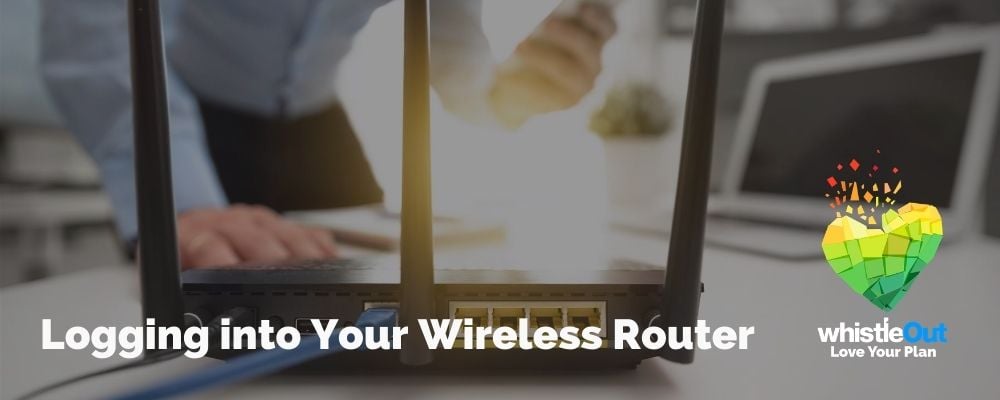
Article Summary
To log into your wireless router:
- Open a web browser on your computer.
- Enter your router's IP address.
- Type in your admin username and password.
Conversely, if your router has a dedicated mobile app, you can log in to your router device using your account information.
To change anything with your Wi-Fi network such as setting a new Wi-Fi password, you'll first have to log into your router. Most routers are easy to log into, especially since many now connect directly to a dedicated mobile app.
This guide will walk you through how to log into your Wi-Fi router, including information you'll need before you log in, plus some specifics for a few of the most popular devices.
Before logging into your router
A few things you'll likely need before logging into your router include:
- The router's username and password. If you didn't change this information to a unique name and password during your router setup, you can typically find the default username and router password printed underneath, on the side, or on the back of your hardware. It's also printed in your router's manual (assuming you keep all of your instruction booklets!).
- Your router's IP address. This is your router's unique identification number. Not sure where to find it? Pop on down below for a quick refresher.
- The login URL. If your router doesn't have a dedicated mobile app (and many do), you'll need to access it from an internet browser using a specific web address that often includes your router's IP address. This is also often printed on your router near your username and password, but you can typically find it using a web search, too.
- An ethernet cable, if your Wi-Fi isn’t working and you don't have internet access using your mobile device. You can manually plug your computer into your modem to get online if you need to.
How to log into a router: 3 steps
Many routers now have dedicated mobile apps that allow for quick and easy login. All you need is your account name and password.
If your manufacturer doesn't have a mobile router app, you'll need to use a browser instead. Most internet service providers (ISPs) that issue modem/router combos follow the login steps listed below (i.e., logging into a Spectrum router is the same process as logging into an AT&T router). If you purchased a router separately, logging in may vary slightly based on your router type.
Here's a general step-by-step for logging into your router:
- Make sure your router is connected to your modem.
- Visit your router's login URL, or simply type in your IP address to your web browser.
- Enter your router's username and password—either the defaults or the ones you created when you initially set up your device.
That's it! You should now have access to your router settings and be able to make any changes you need.
Popular router login info
Here's how to log into some of the top Wi-Fi routers on the market.
Log into Google Nest Wi-Fi
The Google Nest Wi-Fi router is one of the easiest to access, since it's set up and controlled entirely through native mobile apps. All you need is the latest version of the Google Home or Google Wi-Fi app on your Android device or iPhone.
For the Google Home app, simply open and tap your Wi-Fi device, then choose "Settings." You're in!
With the Google Wi-Fi app, there are a couple more steps:
- Tap the Settings tab, and choose "Network & general."
- Select "Network" and tap your Wi-Fi points.
- Choose "Network device settings," and select your device.
Log into a NETGEAR router
You can access a NETGEAR router in two different ways: through the router's Nighthawk mobile app, or using a web browser.
To use the mobile app, make sure your phone is connected to Wi-Fi, then log into the app using your NETGEAR username and password. You're now logged in to make any changes you need.
To use a browser to log into your NETGEAR router, make sure your computer or mobile device is connected to the internet. Then:
- Visit routerlogin.net.
- Enter your router username and password.
Log into a Linksys router
Depending on your Linksys model, you may be able to use the Linksys app to log in using your account username and password. If you have an older model (including the Linksys dual-band and Smart Wi-Fi routers), you'll need to use a browser.
Though not required, Linksys recommends hardwiring your computer to your router to log in, so get ready to put that ethernet cord to good use.
- Connect your computer to your router using your ethernet cable (optional).
- Launch your web browser and enter your IP address or visit http://myrouter.local. You'll see a different log-in screen based on the router device you own.
- Enter your username and password.
- If you're asked for a five-digit recovery key, you can find it on your router's printed label.
Log into an eero router
Eero is a mobile-first system, making it very easy to log into your eero router. Simply download the eero mobile app and use your account name and password to both set up and access your router's firmware. eero makes some of the best long-range routers and best mesh Wi-Fi systems on the planet.
Log into a TP-Link router
For TP-Link Wi-Fi routers, you don't need internet access to log in—the system settings are their own built-in network that lives inside your router itself. Instead, you'll need to make sure you're connected to the router, either through your wireless network or via a wired cable connection.
- If you're logging in wirelessly, connect to your TP-link wireless network.
- If you're connecting to your router directly, use your ethernet cable to connect your computer to one of the LAN ports on your device.
- Open your browser and visit http://tplinkwifi.net or the address listed on the label located on the bottom of your router.
- Enter your username and password.
Router login FAQs
Why might I need to log into my router?
Your router is basically your Wi-Fi network's home base. If you need to make any significant changes to your network, you'll need to log in to do so. Common changes include:
- Updating your router username and password
- Changing your Wi-Fi network name and password
- Creating a guest Wi-Fi network Setting up parental controls
How do I find my router login name and password?
Your router's default name and password is almost always printed directly onto your router label. It's also included in your router's manual. If you're unable to find it in either of those, you can contact your ISP or see if they provide the default name and password online. Remember, too, you may have changed your username and/or your password upon setup!
How do I find my router's IP address?
Your router's IP address is often printed on the label that's underneath or on the back of your router hardware. If not, you can typically find it using your computer or mobile device. This will be slightly different on a Mac vs. PC:
MacOS Devices
- Under your System Preferences, go to your Network menu.
- On the "Wi-Fi" panel, click on "Advanced," then select the TCP/IP tab.
- You should see your router IP address listed.
Windows Devices
- In your Control Panel, select "Network and Internet."
- Choose "View network status," then select your Wi-Fi network.
- In the pop-up window, choose "Details."
- Your router's IP address will display under "IPv4 Gateway."
What is Wi-Fi 6?
Wi-Fi 6 is a new generation of Wi-Fi devices that allows your internet connection to use more frequencies to improve connectivity. Basically, Wi-Fi 6 casts a wider net so more devices can connect simultaneously without straining the network.
Related Articles
Find Better Internet and Phone Plans
Hundreds of internet plans unpacked. All the facts. No surprises.
Internet Providers by Provinces and Territories
- Internet in Alberta
- Internet in British Columbia
- Internet in Manitoba
- Internet in New Brunswick
- Internet in Newfoundland and Labrador
- Internet in Northwest Territories
- Internet in Nova Scotia
- Internet in Nunavut
- Internet in Ontario
- Internet in Prince Edward Island
- Internet in Quebec
- Internet in Saskatchewan
- Internet in Yukon Territory











































